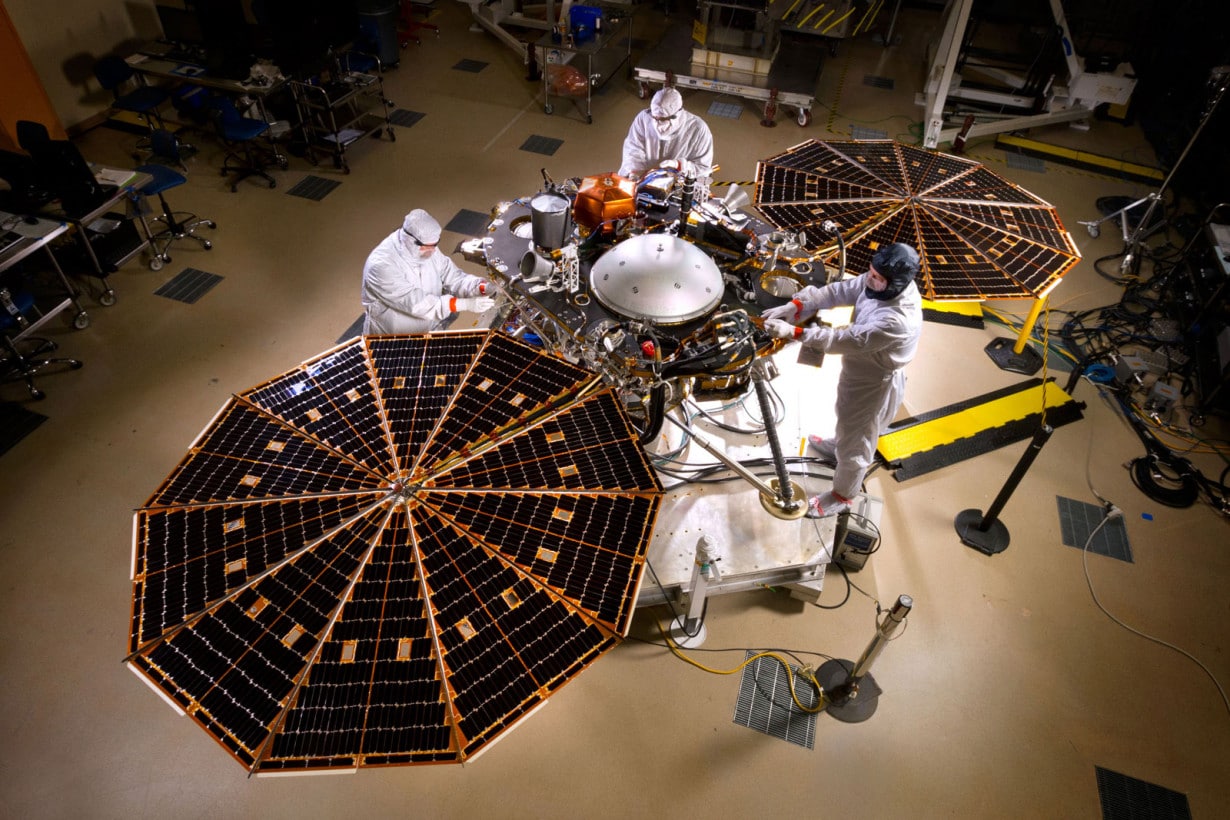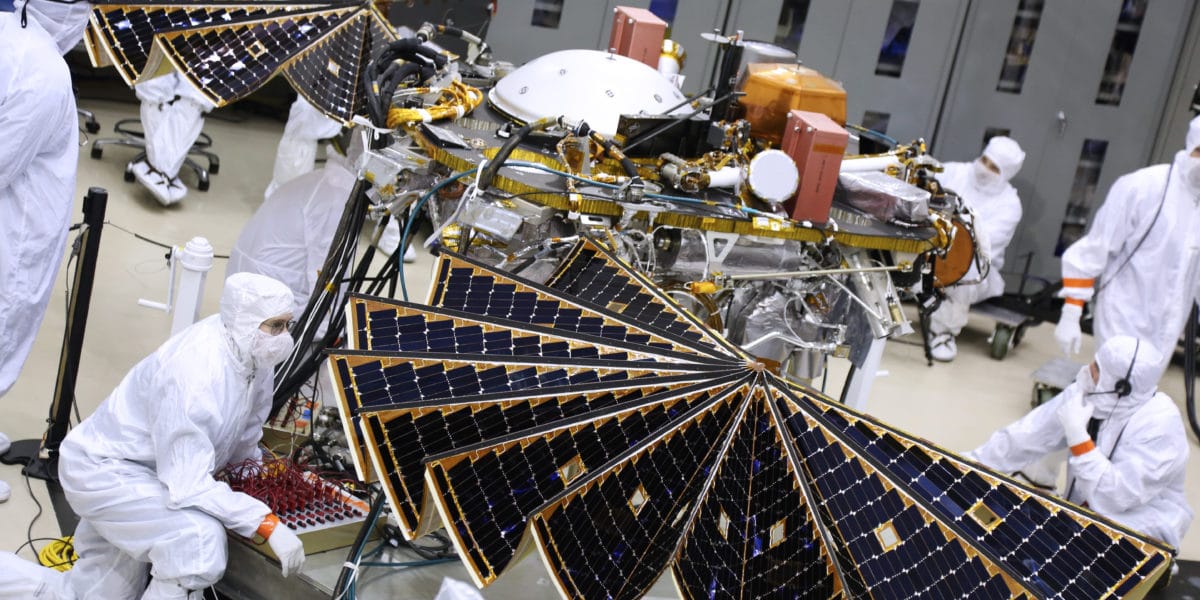The NASA InSight mission successfully landed on Mars on November 26, 2018 and its dual solar panel array has set a daily electricity generation record for the planet.
The 4,588 watt-hours InSight generated on its first sol, or Martian day, from solar power is well over the 2,806 watt-hours generated in a day by NASA’s Curiosity rover, which runs on a nuclear system called a radioisotope thermoelectric generator. Coming in third was the solar-powered Phoenix lander, which generated around 1,800 watt-hours in a day, according to NASA officials.

The InSight’s array – the UltraFlex – is manufactured by Orbital-ATK. The UltraFlex was used on the Mars Phoenix Lander and the Cygnus cargo resupply vehicle. The Cygnus completed four missions to the International Space Station using the UltraFlex, in December 2015, March 2016, October 2016 and April 2017. Each Cygnus wing has a diameter of 3.7 m and is designed to withstand 5 g’s acceleration, highlighting one of the advantages available with a flexible fold-out architecture.

Per the manufacturer of the satellite, Northrop Grumman, the UltraFlex is powered by a triple junction “High Aspect ratio ZTJ 29.5+% Red / BOL optimized” (.pdf) solar cell. The solar cell is manufactured by SolAero Technologies Corp. in Albuquerque, New Mexico.
A pair of rechargeable, 25 amp-hour lithium-ion batteries located on the lander will provide energy storage. The lithium-ion batteries are from the Yardney Division of EaglePicher Technologies in East Greenwich, Rhode Island.
The hardware is designed to pack tightly, and then once on the ground – deploy.

InSight’s twin solar arrays are each 7 feet (2.2 meters) wide; when they’re open, the entire lander is about the size of a “big 1960s convertible”. Mars has weaker sunlight than Earth because it’s much farther away from the Sun, but the lander doesn’t need much to operate: The panels provide 600 to 700 watts peak production on a clear day, about 1/2 of the production on Earth. Even when dust covers the panels — what is likely to be a common occurrence on Mars per NASA — they should be able to provide at least 200 to 300 watts peak production.
The probe’s inaugural image on the planet:
https://twitter.com/NASAInSight/status/1067244283688669184
This content is protected by copyright and may not be reused. If you want to cooperate with us and would like to reuse some of our content, please contact: editors@pv-magazine.com.









Excellent information to common man. I am from India, now on tour at Long Island NY USA. Thanks .